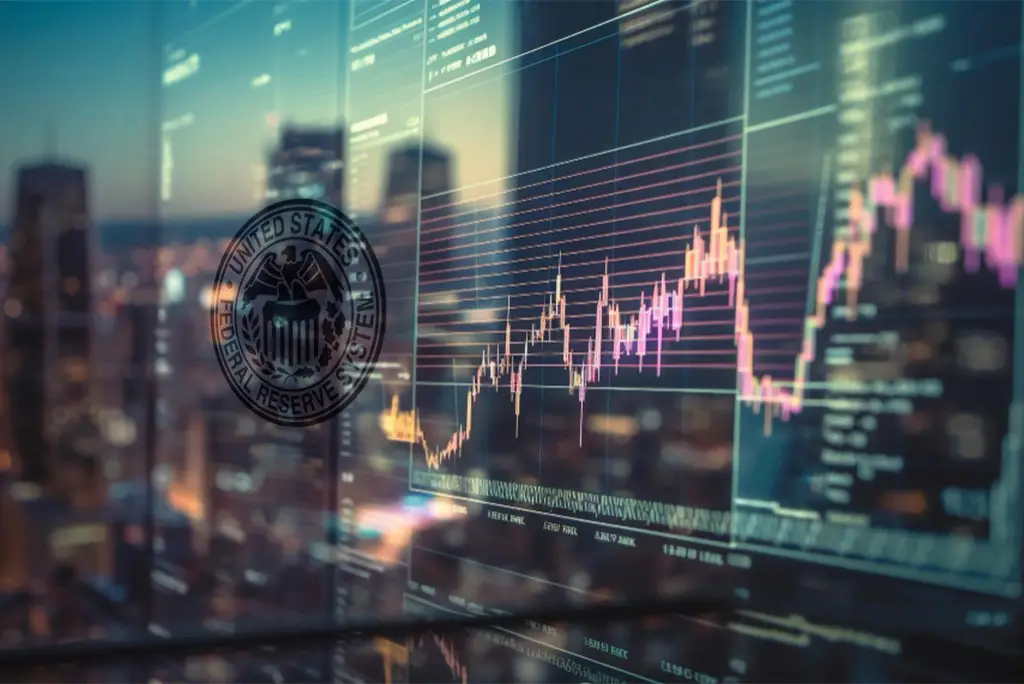The June Consumer Prices Index report shows the slowest annual price increase since March 2021. Jefferies US economist Thomas Simons states that the Fed’s future actions remain uncertain.
The release of Wednesday’s report sparked further discussion on future actions after the July meeting. Inflation above target and a tight labor market maintain the consensus for an upcoming fed rate hike.
Core inflation rose 4.8% over the past year, below economists’ 5.0% forecast. However, it significantly exceeds the Federal Reserve’s target of 2%.
The data brings mixed news for US consumers and complicates the Fed’s decision-making.
Thomas Simons writes that there is no strong conviction about the Fed’s actions beyond September. The report indicates a delicate and uncertain path forward for the Federal Reserve.
The central bank is expected to raise interest rates by 25 basis points on July 26.
Brief Data about Consumer Prices
The latest Bureau of Labor Statistics data reveals that consumer prices have risen slowly since March 2021. In June, the Consumer Price Index (CPI) increased by 0.2% compared to the previous month.
The CPI showed a 3% year-over-year gain in June, a slowdown from the 4% increase in the previous month. Both the monthly and annual increases were slightly better than economists’ forecasts.
On a “core” basis, which excludes volatile food and gas costs, prices climbed 0.2% in June compared to the previous month. Core inflation also saw a 4.8% increase over the past year, slightly surpassing economist expectations.
The monthly increase in core inflation was the smallest since August 2021. Rent prices remained a significant factor in core inflation, with both rent and owners’ equivalent rent rising. The shelter index, driven by rising rent prices, accounted for over 70% of the core inflation increase.
Motor vehicle insurance and apparel prices increased in June, while airline fares and used car prices softened. Airline fares fell 8.1%, and used car prices dropped 5.2% year-over-year. The data indicates a cooling trend in inflation for June compared to previous months.
Economists’ forecasts were slightly exceeded in terms of both monthly and annual price increases. The slower price growth may provide some relief to consumers facing rising costs. The Bureau of Labor Statistics highlighted various indexes that experienced price changes in June.
The future market reflects a 27% probability of a 50 basis point interest rate increase by November. Before the CPI release, there was a 36% chance of two hikes.
CPI slowdown indicates Fed rate hike in July
Citi economists had been advocating for two rate hikes, but the outlook is shifting. A slowdown in CPI suggests that a Fed rate hike may be likely in July, but a softer CPI raises the bar for a September hike. Citi economists Veronica Clark and Andrew Hollenhorst note that a Fed rate hike in September could be delayed to November.
The CPI data are influencing the market’s expectations for future rate hikes. The Fed’s decision-making regarding rate hikes is being influenced by changing economic conditions.
The timing of rate hikes is becoming more uncertain due to evolving CPI trends.
Richmond Fed President Thomas Barkin stated that he requires convincing evidence of sustained inflation reduction. Barkin commented at an event in Maryland following Wednesday’s data release.
The statement highlights Barkin’s cautious approach toward the trajectory of inflation.
Economists’ View
Economists suggest that achieving the final drop in inflation may take longer than the previous decline.
Wells Fargo senior economist Sarah House anticipates one more rate hike in July. House observes stable prices for food and energy in 2023.
House argues that even with declining car and housing prices, core inflation may struggle to fall below 3%. House writes that rate cuts are unlikely in the near future.
The underlying trend in inflation is expected to remain closer to 3% than 2%. House expresses uncertainty regarding a timely return to the Federal Open Market Committee’s 2% inflation target.
While wage growth is no longer accelerating, labor costs continue to rise due to a tight job market. The sustained growth in labor costs exceeds the range consistent with 2% inflation over time.
House highlights the challenges in achieving a steady return to the inflation target.
